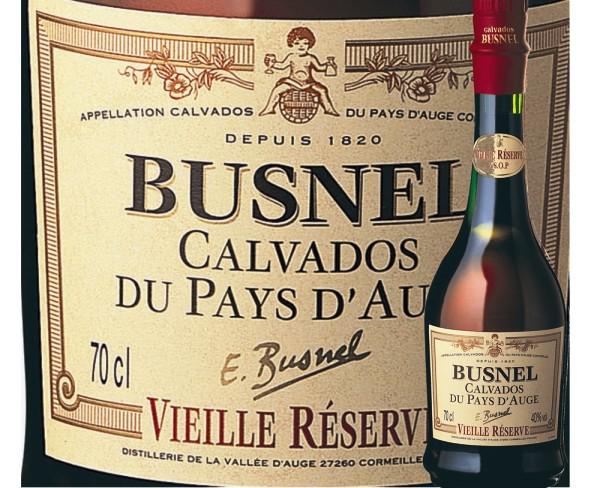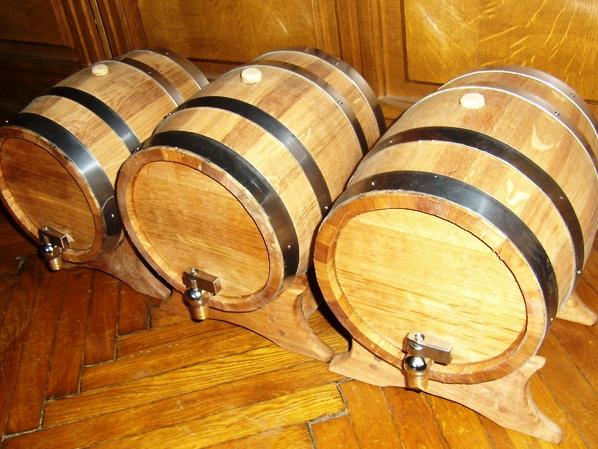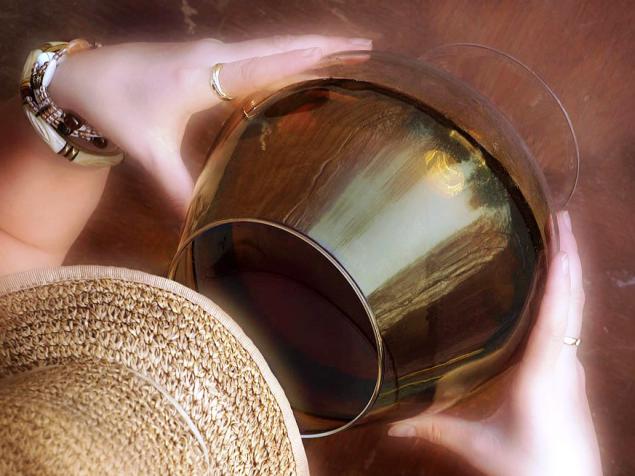Calvados - the color of the sun, the taste of summer.
 Bashny.Net
Bashny.Net
The name of the drink is known to everyone who is interested in the works of Remarque - calvados mentioned in almost each of his works. So what kind of a drink?
15 ph + text © et
= 1 =

Calvados - alcoholic drink about 40 degrees, which is produced by distillation and the subsequent exposure of cider. The technology is similar to the production of Calvados brandy, but the starting material for her other - apples, sometimes in combination with pears. To date for the production of Calvados recommended 48 varieties of apples special, different from the usual content of tannins.
= 2 =

Depending on the acidity, sugar content and bitterness are four categories of apples - bitter, bittersweet, sweet and sour. In addition, for cider production, as a primary product, is used not one of any variety, and mixing of different varieties of apples in a certain proportion. Ideally it considered drink consisting of 40% sweet apples, 40% and 20% bitter acid.
= 3 =

Pears are comparable with sour apples, while according to some rules of the production of Calvados (Calvados Domfrontais) pear alcohol use is mandatory. The formulation may comprise up to 40 different varieties. According to current standards for the production of Calvados can be used only fruit taken from trees, though initially for the production of cider used mostly windfalls.
= 4 =

Selected apples specifically wash. Their washing and cleaning take place during the movement in the water flow into a special storage. After washing and drying of them squeeze wort, a natural fermentation which lasts for five weeks and then turns into cider.
= 5 =

The next stage of production - single (AOC calvados, Calvados Domfrontais) or double (Calvados Pays d'Auge) distillation. If a single distillation cider is distilled until until a strength of 72% alcohol. The double distillation is more complicated: the original cider is distilled until a 28-30% alcohol, after which it was re-distilled, separating alcohols. Remaining "heart" has a Fortress about 70%.
= 6 =

After calvados kept in oak barrels, with only French oak wood - an average of 2 to 10 years. In this excerpt longer than that is allowed, smaller - no.
= 7 =

The first distillation of cider mentions in 1553 in his "Diary" Gilles de Gubervil. The word "Calvados" one of the versions associated with belonging to the Spanish King Philip-II vessel «El Calvador», stranded in 1588 aground off the coast of Normandy. The name of the "Calvados" with respect to this drink came into use in the XIX century and was associated with the relevant department of Normandy, and in 1942 was formalized the rules of the French «Appellation d'Origine Contrôlée», propagating almost all French regional products from the production of special traditions .
= 8 =

Calvados became popular during the First World War, but the official status was after 1941, when the government has decided all alcoholic beverages were requisitioned for fuel. However, since the use of Calvados in this way proved to be extremely profitable, in 1942 there were two decrees (appellation), protecting the right of this drink - AOC calvados and Calvados Pays d'Auge. In 1997 there is another appellation - Calvados Domfrontais.
= 9 =

Calvados is recommended to be served at room temperature or a glass of cognac glasses for white wine.
= 10 =

Calvados is considered superb digestif - a drink, finishing a meal, but you can also use it as an aperitif or as between serving dishes. Linked to this is the tradition of "Norman hole» («le trou Normand»), when small amounts of calvados served between courses at a long meal.
= 11 =

We also know a lot of Calvados-based cocktails.
= 12 =

Calvados - a delicious drink or amber color of the sun with the scent of ripe apples. Of course, abuse it, as well as other alcoholic beverages, it is not necessary, but why not treat yourself once in a while?
= 13 =

All YaPovtsev - with the next Friday!
= 14 =

Enjoy =)
= 15 =

Source:
15 ph + text © et
= 1 =

Calvados - alcoholic drink about 40 degrees, which is produced by distillation and the subsequent exposure of cider. The technology is similar to the production of Calvados brandy, but the starting material for her other - apples, sometimes in combination with pears. To date for the production of Calvados recommended 48 varieties of apples special, different from the usual content of tannins.
= 2 =

Depending on the acidity, sugar content and bitterness are four categories of apples - bitter, bittersweet, sweet and sour. In addition, for cider production, as a primary product, is used not one of any variety, and mixing of different varieties of apples in a certain proportion. Ideally it considered drink consisting of 40% sweet apples, 40% and 20% bitter acid.
= 3 =

Pears are comparable with sour apples, while according to some rules of the production of Calvados (Calvados Domfrontais) pear alcohol use is mandatory. The formulation may comprise up to 40 different varieties. According to current standards for the production of Calvados can be used only fruit taken from trees, though initially for the production of cider used mostly windfalls.
= 4 =

Selected apples specifically wash. Their washing and cleaning take place during the movement in the water flow into a special storage. After washing and drying of them squeeze wort, a natural fermentation which lasts for five weeks and then turns into cider.
= 5 =

The next stage of production - single (AOC calvados, Calvados Domfrontais) or double (Calvados Pays d'Auge) distillation. If a single distillation cider is distilled until until a strength of 72% alcohol. The double distillation is more complicated: the original cider is distilled until a 28-30% alcohol, after which it was re-distilled, separating alcohols. Remaining "heart" has a Fortress about 70%.
= 6 =

After calvados kept in oak barrels, with only French oak wood - an average of 2 to 10 years. In this excerpt longer than that is allowed, smaller - no.
= 7 =

The first distillation of cider mentions in 1553 in his "Diary" Gilles de Gubervil. The word "Calvados" one of the versions associated with belonging to the Spanish King Philip-II vessel «El Calvador», stranded in 1588 aground off the coast of Normandy. The name of the "Calvados" with respect to this drink came into use in the XIX century and was associated with the relevant department of Normandy, and in 1942 was formalized the rules of the French «Appellation d'Origine Contrôlée», propagating almost all French regional products from the production of special traditions .
= 8 =

Calvados became popular during the First World War, but the official status was after 1941, when the government has decided all alcoholic beverages were requisitioned for fuel. However, since the use of Calvados in this way proved to be extremely profitable, in 1942 there were two decrees (appellation), protecting the right of this drink - AOC calvados and Calvados Pays d'Auge. In 1997 there is another appellation - Calvados Domfrontais.
= 9 =

Calvados is recommended to be served at room temperature or a glass of cognac glasses for white wine.
= 10 =

Calvados is considered superb digestif - a drink, finishing a meal, but you can also use it as an aperitif or as between serving dishes. Linked to this is the tradition of "Norman hole» («le trou Normand»), when small amounts of calvados served between courses at a long meal.
= 11 =

We also know a lot of Calvados-based cocktails.
= 12 =

Calvados - a delicious drink or amber color of the sun with the scent of ripe apples. Of course, abuse it, as well as other alcoholic beverages, it is not necessary, but why not treat yourself once in a while?
= 13 =

All YaPovtsev - with the next Friday!
= 14 =

Enjoy =)
= 15 =

Source:
Tags
See also
Oh Rio, Rio
SIMORONSKY RITUAL "CASH SOCKS".
The most incredible alcoholic beverages
Calvados in Normandy
Production of Calvados
Travel to Zakazvkaze - 2013
I want to cruise!
How to make tequila
108 facts about Macedonia eyes Ukrainian
Very beautiful Soviet actresses

















